|
|
Post by 1dave on Jul 7, 2017 1:08:04 GMT -5
mohs got me interested in the WEIRD CAVES of the Papago Buttes. Something very unusual happened to form them. I spent most of today (6 July 2017) Googling the northwestern member, Barnes Butte. It has been revealing of something I least expected. Two layers of rock are clearly visible. The South side is mostly pink, while the north is mostly purple because the pink has weathered away. All of the Papago Buttes were capped with a pinkish "Barnes Butte Breccia" - Reddish-brown, course·grained, poorly sorted and stratified fluvial conglomerate. Clasts are 70 to 85% granite and 10 to 20% meta-rhyolite. They are angular to subangular, 1/4 in. to 15 ft (0.7 to 4.5 m) in diameter, in a matrix of rock fragments and ferrugenous cement. The next layer down is a purplish "Zoo Breccia" - Purple to reddish·brown, coarse~grained, unsorted, poorly stratified, massive fluvial conglomerate. Clasts are 30 to 100% meta-rhyolite, 0 to 35%granite, and a small amount of a distinct dacite porphyry. They are angular, 1/4 in, to 2 ft (0.7 to 60 cm) in diameter. The Matrix is a mixture of silt, clay, and ferrugenous cement. Note the difference between the two layers. The pink is mostly large chunks of granite, the purple is mostly smaller pieces of meta-rhyolite and clay. The caves appear to have been formed on the contact zone between the two layers. I suspect saturated clay was the cause of their creation. A Google aerial view of Barnes Butte. North is at the top. The pink and purple layers are clearly visible.  A street view of the south side of Barnes Butte. Note all the caves! Now note the "tongue hanging out" feature of the caves! 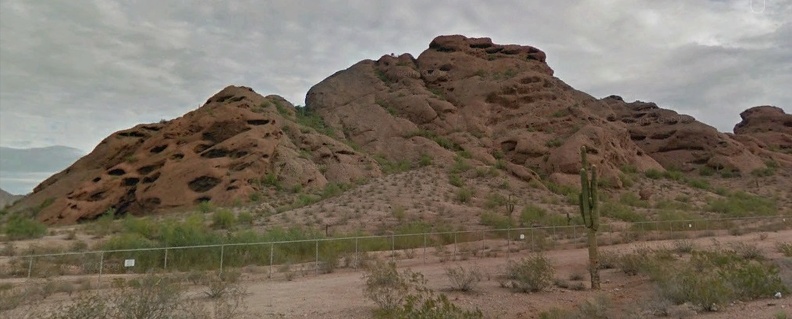 A closer aerial view of the southwest corner. The "tongues" seem to be more purple.  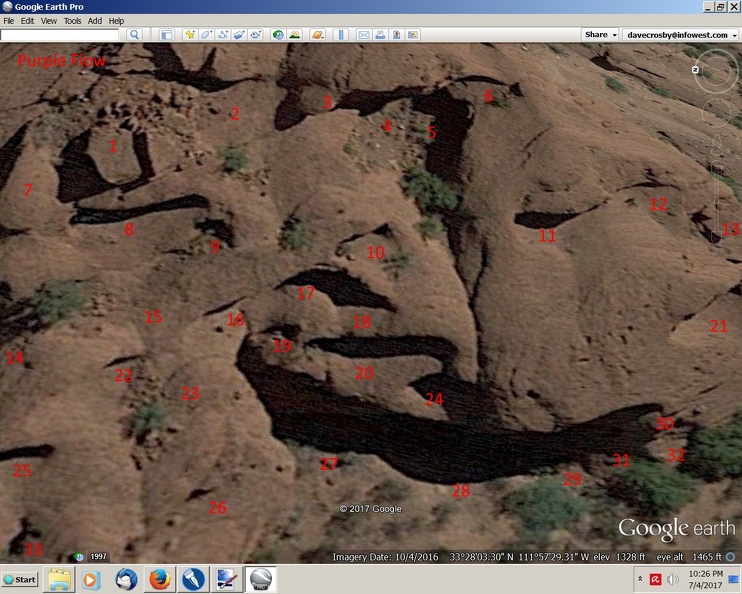 Panning slowly to the north. The pink is mostly gone from the next section, but you can see where the purple material slid to form caves. 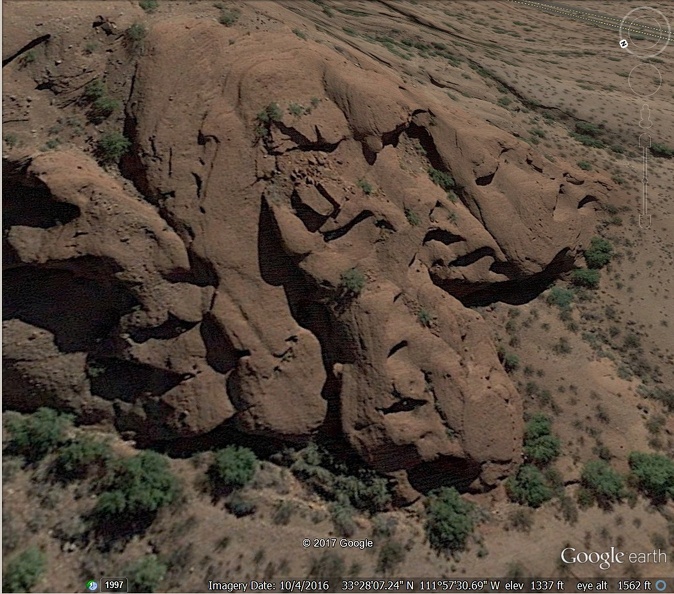 Now looking at the north corner. The pink is gone, but still evidence of caves. Something new is now visible. See the long tongues with no caves? 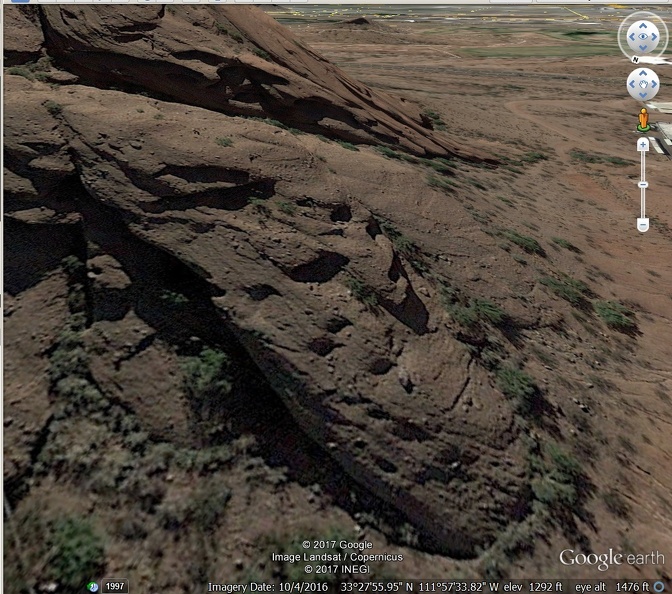 backing away  Backing away even more to look at the north side.  Are you intrigued?
|
|
|
|
Post by orrum on Jul 7, 2017 4:40:43 GMT -5
Yes, I want to go there while out west this winter Dave!
|
|
|
|
Post by 1dave on Jul 7, 2017 8:00:03 GMT -5
Yes, I want to go there while out west this winter Dave! Please take lots of photos for me Bill. |
|
AzRockGeek
has rocks in the head
  
Member since September 2016
Posts: 703
|
Post by AzRockGeek on Jul 7, 2017 8:19:52 GMT -5
Many a hiker climb up there to view the sunset and require rescue to get down. Use to live about half mile from there. Tim  |
|
|
|
Post by 1dave on Jul 7, 2017 8:45:10 GMT -5
Many a hiker climb up there to view the sunset and require rescue to get down. Use to live about half mile from there. Tim  Is that "Hole in the Rock"? EXCELLENT tongue on the right side! Some tongue material still visible below the hole. |
|
jamesp
Cave Dweller 
Member since October 2012
Posts: 36,607
|
Post by jamesp on Jul 7, 2017 9:11:09 GMT -5
Looks harmless to an easterner but apparently not.
They must climb up there and never look back till it's time to go back down.
|
|
jeannie
spending too much on rocks
 
Member since January 2017
Posts: 266 
|
Post by jeannie on Jul 7, 2017 14:34:35 GMT -5
This is fascinating! Thank you!💕
|
|
jamesp
Cave Dweller 
Member since October 2012
Posts: 36,607
|
Post by jamesp on Jul 7, 2017 15:05:59 GMT -5
Free hand rock climbers come to this park. About 12 acres. Pretty much a party spot on the weekends. These granite boulders are 15 to 35 feet tall. Above 900 feet elevation in this area, are these exposed granite boulders. I have State of Georgia geological publications dating in the 50's describing them as 'n----- heads', yes the 'N' word being used in a government publication go figure. Certainly they have destroyed them by now. Apparently few injuries. Amazing to watch them do their stuff. Being relatively safe low climbs they push the climbing envelope. 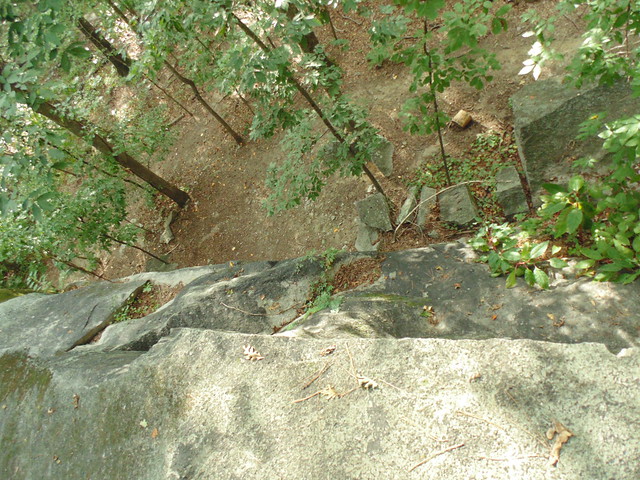 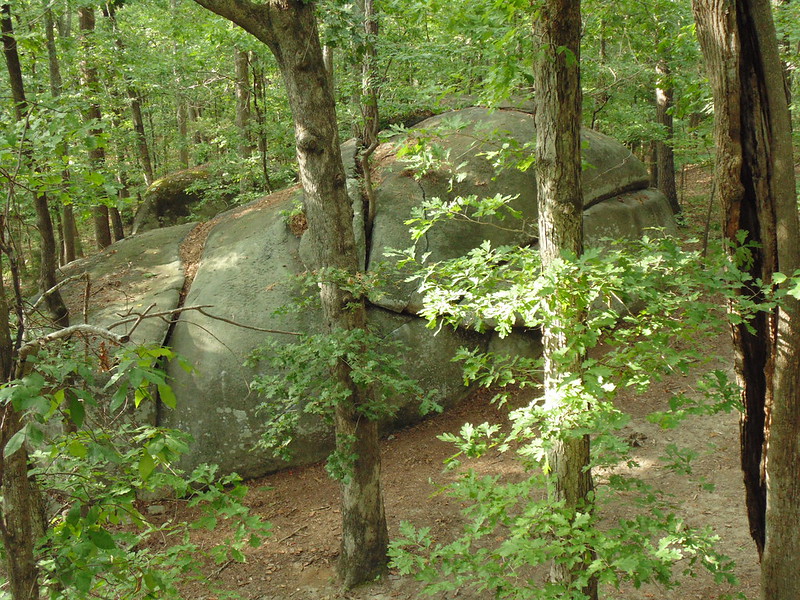 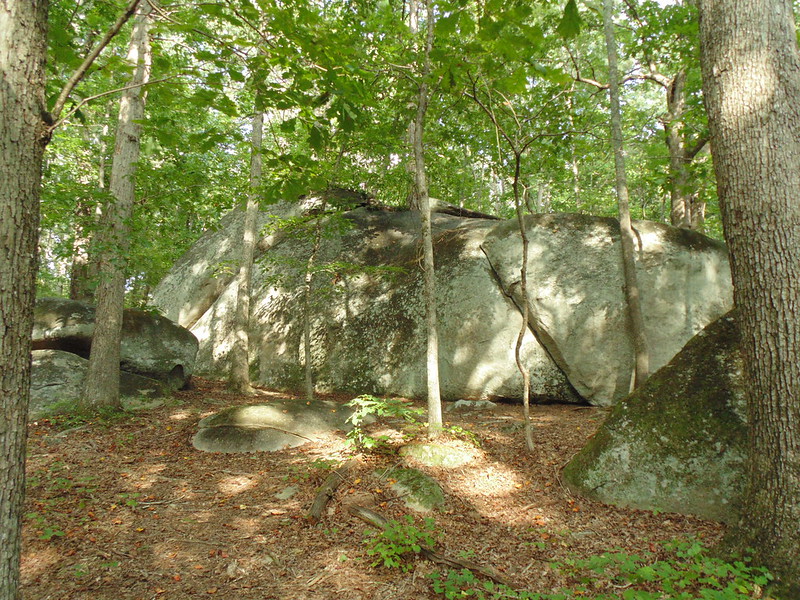 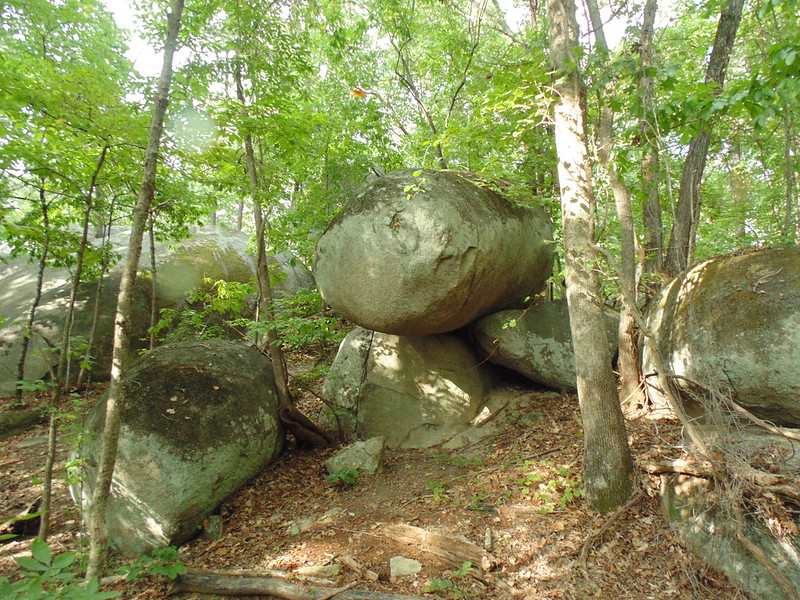 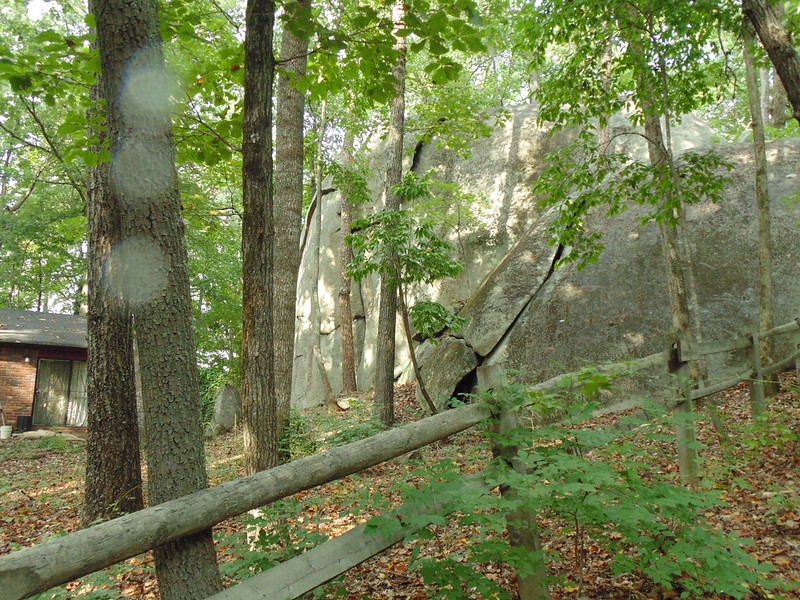 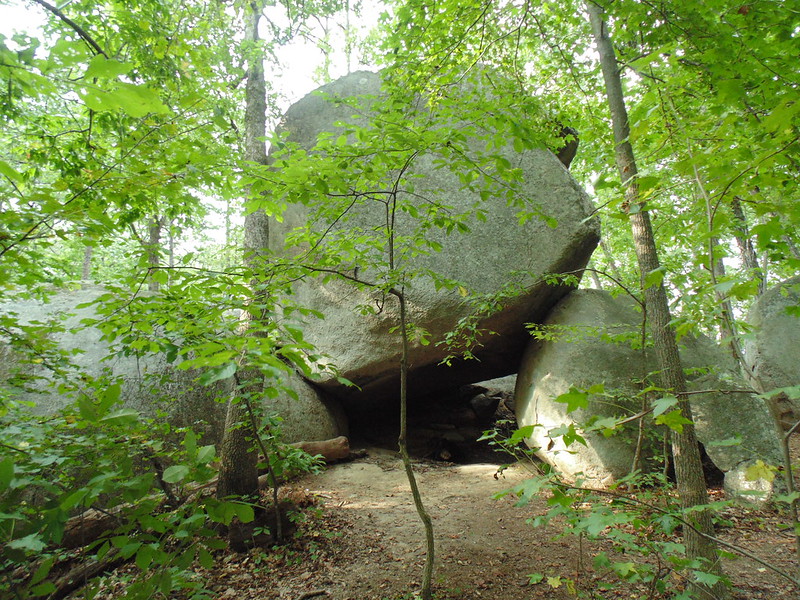 |
|
|
|
Post by melhill1659 on Jul 7, 2017 19:26:09 GMT -5
It's very interesting! I have this book on two of my Book sites watch list.  |
|
|
|
Post by 1dave on Jul 7, 2017 19:34:39 GMT -5
jamesp the problem with the Barnes Butte Breccia is that the "cement" holding the rocks together crumbles in your fingers. There is nothing to hold on to. That is why the Native Americans never bothered to leave any artwork on them.
|
|
metalsmith
Cave Dweller 
Member since October 2012
Posts: 1,537
|
Post by metalsmith on Jul 8, 2017 3:49:46 GMT -5
It's very interesting! I have this book on two of my Book sites watch list.  How is your [a href="https://www.amazon.de//gp/offer-listing/0121986519/sr=/qid=/?condition=new[blocked Amazon Associate tag]bookfinder-de-test-a-21"]German[/a]? I occasionally find German books are good value - just check they're written in English first - this one is! |
|
metalsmith
Cave Dweller 
Member since October 2012
Posts: 1,537
|
Post by metalsmith on Jul 8, 2017 3:59:57 GMT -5
Free hand rock climbers come to this park. About 12 acres. Pretty much a party spot on the weekends. These granite boulders are 15 to 35 feet tall. Above 900 feet elevation in this area, are these exposed granite boulders. I have State of Georgia geological publications dating in the 50's describing them as 'n----- heads', yes the 'N' word being used in a government publication go figure. Certainly they have destroyed them by now. Apparently few injuries. Amazing to watch them do their stuff. Being relatively safe low climbs they push the climbing envelope. Well that was my thing in the days gone by - and might yet come again. I recently climbed (around 3 weeks ago) my first boulder problem since my accident nearly 4 years ago. Only one; not too hard. It took me a couple of weeks to recover. Not my hardest climb, but my favourite rock has to be <adopts French accent> l'elephant in the forest of Fontainebleau not far from Paris:  When you get this high you start to feel the pressure, even though the hard part is done. eta - not me climbing btw! |
|
jamesp
Cave Dweller 
Member since October 2012
Posts: 36,607
|
Post by jamesp on Jul 8, 2017 5:38:40 GMT -5
jamesp the problem with the Barnes Butte Breccia is that the "cement" holding the rocks together crumbles in your fingers. There is nothing to hold on to. That is why the Native Americans never bothered to leave any artwork on them. climbing steep crumbly rock = bad idea |
|
jamesp
Cave Dweller 
Member since October 2012
Posts: 36,607
|
Post by jamesp on Jul 8, 2017 5:39:59 GMT -5
|
|
|
|
Post by 1dave on Jul 8, 2017 8:34:28 GMT -5
Not a word on how the caves were formed?
Looking at the images I guess the Barnes Butte member to be 20-30 feet thick. That is a lot of weight on the underlying layer. On the slope sides with water in the clay, . . .
|
|
|
|
Post by mohs on Jul 8, 2017 10:26:41 GMT -5
I always assume the pockmarks were formed from large rocks dislodging creating a cavity.
Yet I didn’t see a boulder strewn landscape.
Now I’m more swayed to the idea that the pockmarks are created when smaller rocks dislodge,
and under ideal conditions;
the cavity grows from wind & rain erosion
over vast periods of time.
|
|
|
|
Post by 1dave on Jul 8, 2017 12:45:39 GMT -5
Yeahbut . . . methinks the caves with tongues sticking out all formed within a month of each other. I never saw any mention of how thick the layers were, but I'm guessing the purple Zoo Member at 30 feet and the pink Barnes Member the same. I'm guessing around 20,000 years ago the granite bases of the Papago Buttes protruded perhaps 50- 100 feet above the valley floor. A. The purple layer came roaring down the Salt River Canyon in an ice melt flood, carrying 2 foot chunks of meta-rhyolite and buries everything 30 feet deep in rock filled mud. It dries. time passes. B. Perhaps a thousand years later a HUGE flood came ripping down, packing up to 15 foot diameter granite boulders and again covers everything about 30 feet deep. C. Almost immediately water seeps down into the clay in the purple layer and on the slopes, the purple starts sliding, dragging purple and pink with it, forming the caves. D. More and more floods scour the valley, deepening it, making the buttes higher.  |
|
|
|
Post by mohs on Jul 8, 2017 14:11:09 GMT -5
Now that is a colorful theory
I like it!
mos tl y
|
|
|
|
Post by victor1941 on Jul 8, 2017 14:41:29 GMT -5
I really enjoyed the beauty of the forest pictures. Thanks!
|
|
metalsmith
Cave Dweller 
Member since October 2012
Posts: 1,537
|
Post by metalsmith on Jul 8, 2017 15:40:20 GMT -5
Yeahbut . . . methinks the caves with tongues sticking out all formed within a month of each other.  I'm not sure where Barnes Butte sits on the following cross-section - can anyone help? Where is Temple Butte in relation? Does the XS not cut Barnes Butte? link to Cross-Section (XS)Thickness should be taken normal to horizontal bedding (even where subsequently tilted). |
|












































